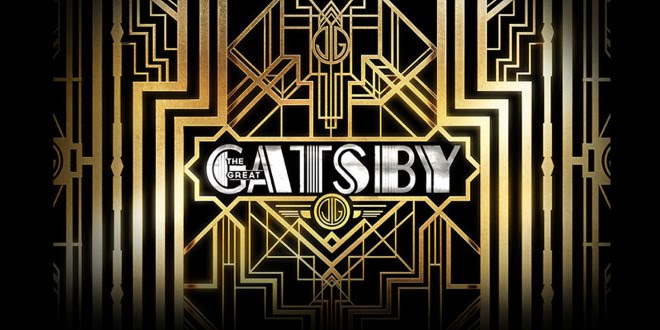CLASS AND WEALTH IN THE GREAT GATSBY

Outline
I.Brief introduction about what novels entail
II.Overview of The Great Gatsby
III.First aspect of love in The Great Gatsby
IV.Second aspect of wealth and class in the novel
V.Analysis of Tom’s and Gatsby’s dialogue
VI.Examples from real-life society
VII.Conclusion and final thoughts
Introduction
Every novel reflects various facets of human life and society. Therefore, it mirrors socio-economic, political, religious, and cultural circumstances. Reading novels helps us to understand the prevailing conditions of the past and futuristic occurrences. It provides awareness and insight into a person’s being and how society reacts to achievements and flaws. Each novel consists of a primary theme that consistently appears throughout the entirety of the text. To summarize, novels are vehicles of emotions, beliefs, ideas, thoughts, manners, and expectations.
Overview of the GREAT GATSBY
The “Great American Novel”, also universally known as “The Great Gatsby” is a story about wealth, class, status, love, and the “American Dream”. Fitzgerald reflects the “Roaring Twenties” (the Jazz Age) which caused major changes in the culture and lifestyle of Americans. Since World War just ended, the economy boomed and the US swiftly became one of the wealthiest countries in the world. Individuals and families shifted from rural to urban areas causing a mass migration to areas with better healthcare, schools, and facilities. Therefore, the wealthy were given extraordinary privileges including tax benefits and adoration while the people of the lower classes struggled for survival.
The various characters in the novel mirror the different social classes, customs, behaviors, thinking, morals, ideologies, and values of that time. Clark (1925) says that the author “discloses in these people a means of spirit, carelessness and absence of loyalties”. The heart of the great American novel centers on “old money” and “new money” chasing the American dream—a concept by which “every American has the chance to be successful and happy if they work hard” (“the American dream”, n.d.). First, the essay discusses the aspect of love in the novel. Next, it expounds on class and wealth while analyzing Tom and Gatsby’s dialogue. Finally, it concludes with real life-examples from contemporary society.
First theme/aspect
The novel by F. Scott Fitzgerald depicts the everlasting pursuit of a self-made “new” rich gentleman named Jay Gatsby for the love of his childhood sweetheart, Daisy. Thomas Flanagan (2000) describes him to be living “in the world of romantic energies and colors”. The author portrays Gatsby’s unwavering love for the beautiful yet already married woman in multiple ways. In the beginning, Gatsby outstretches his arms towards a green light that is later revealed to be where Daisy lives. Later, readers realize that Gatsby acquired wealth and even chose to live in his mansion as it was close to Daisy’s home. In the end, his unbreakable love manifests itself in the truest form—a sacrifice—which he makes to protect Daisy from the law. Conclusively, at every turn, Gatsby demonstrates the depth of his love and loyalty to Daisy, even without sufficient reciprocation.
Second Aspect/theme
Another theme that this novel sheds light on is class. According to Friedrich Engels, “All history has been a history of class struggles between dominated classes at various stages of social development.” In this novel, there are three classes—old money, new money, and no money. Daisy and Tom portray old money. Gatsby is a member of new money. Wilson and Myrtle belong to the lower class—which apparently have very little money and importance in the society of the 1920s.
The author first depicts class by geographical location. West Egg, which is the new home of the narrator Nick Carraway, is a community residential to the “newly” rich people. These people have recently made their wealth.
On the other side, East Egg is the abode of Tom and Daisy Buchanan—a wealthy couple whose families have been rich for generations (aka “old money folk”). Therefore, Fitzgerald manages to connect dwellings to class and money explicitly in his masterpiece.
Analysis of Dialogue
Now, the dialogue between Tom and Gatsby is one of the most well-known lines in all of American Literature. Their discussion is essential to class and wealth. Gatsby believes that he and Tom are the same; they both have the same amount of money and therefore stand on an equal pedestal. However, Tom refutes his claim—calling him delusional and thick-headed. Ramos proclaims that he “has reduced whole people to ashes without any thought of consequences”.
Tom crushes Gatsby’s hopes of ever acquiring Daisy as she prefers economic security over affection and devotion. Daisy is “vulgar and inhuman” (Alfred Kazin)—this is why she allows Gatsby to pursue even though she knows they can never be together. He tells Jay Gatsby that although they might be equal in financial terms, his blood is different. Here, he is referring to his upbringing and past. Tom was born into a wealthy family, given the best education money could buy, and now has a status much higher than Gatsby could ever achieve in his lifetime. While Gatsby’s social standing is an achieved status[ Achieved status refers to a social position one must struggle or make efforts to earn.], Tom’s is an ascribed status[ Ascribed status refers to a social position one is given at birth or born into.].
So, Tom comes from a silver-spoon family while Gatsby hails from poor farmers. Tom emanates upper-class insincere politeness and manners which he has learned from his grandfathers. Gatsby, being newly rich, shows good manners but also pretentiousness. Class is more than just about money; it is also related to education, social respectability, social connections, and noble breeding. Therefore, Tom looks down on Gatsby, patronizing him for thinking they could ever be equal. Just as Edouard Louis notes that there is a “desperate, continual, renewed effort to place some people on a level below you”.
Conclusion
Therefore, the difference between Tom and Gatsby is from birth. One is blue-blooded and the other one struggles to achieve his place in the world. Although Fitzgerald wrote this in 1925, the novel still resonates with contemporary occurrences today. Therefore, the novel stands the test of time. In conclusion, there are many Toms in our society and still many more Gatsbys near our doors. Class and wealth are not just figments of the past but still very much with us today. These kind of differences are hard to overcome, despite generations of challenging them.
BEFORE YOU GO
Don’t forget to check out MY POETRY.
READ MORE ABOUT INFJ, ESFP, INFP, AND ENFP here!
Currently, I am a student of Fatima Jinnah Women University. With a burning passion for psychology, words, and dreams, I decided to abandon medical studies for humanities. These days, when I’m not listening to ballads, watching movies, or sitting down with a good novel, I am rigorously studying Hangul (Korean language) to satisfy my obsession for BTS and K dramas. I’m a thinking introvert and INFJ personality. Therefore, I like ‘me time’. My articles typically resonate with psychological well-being advice.









